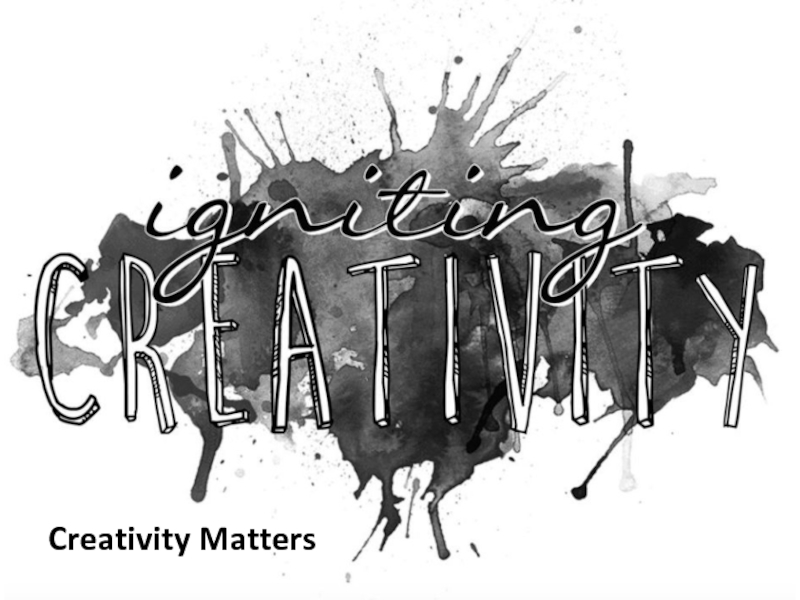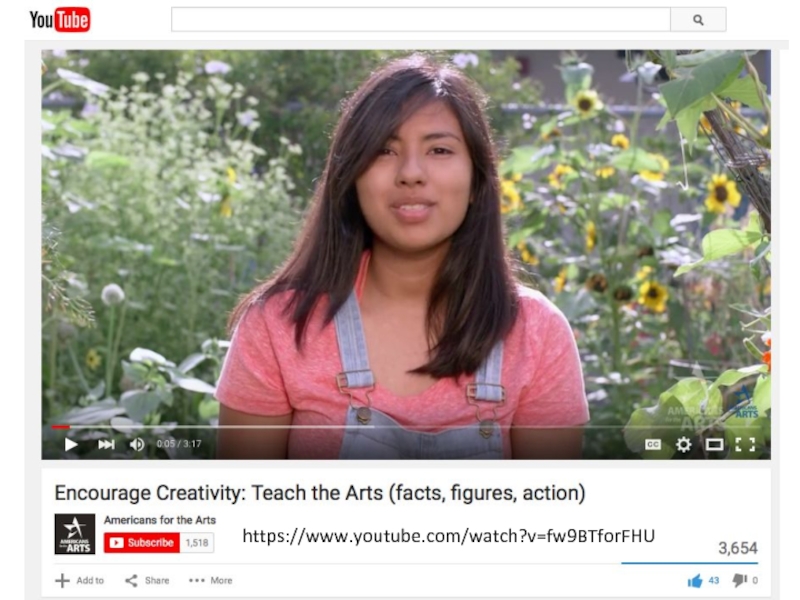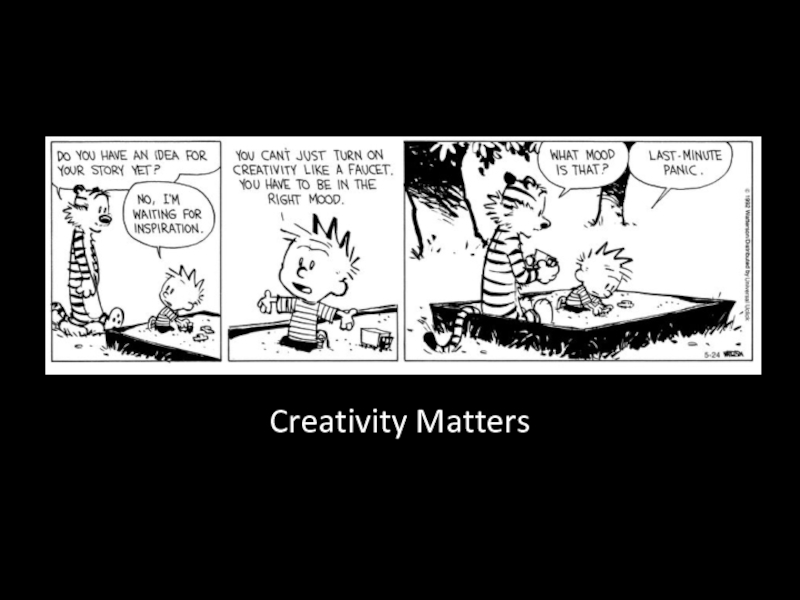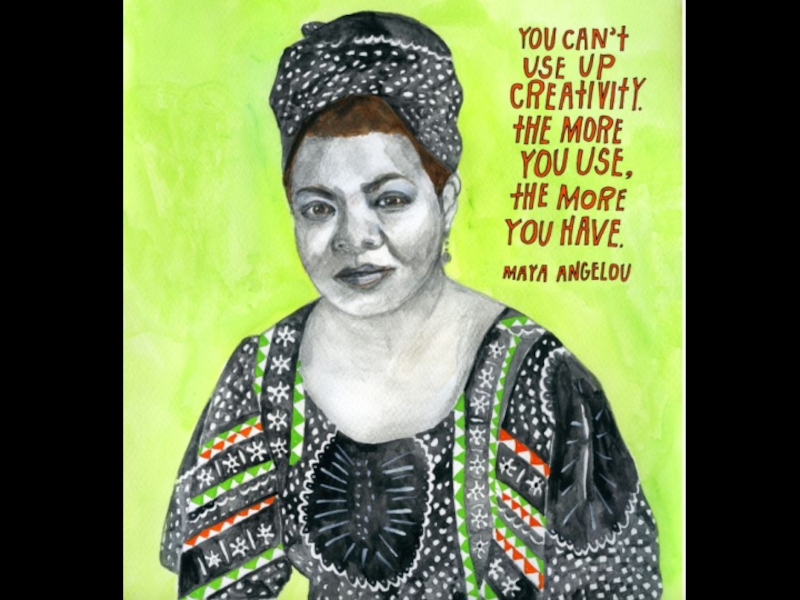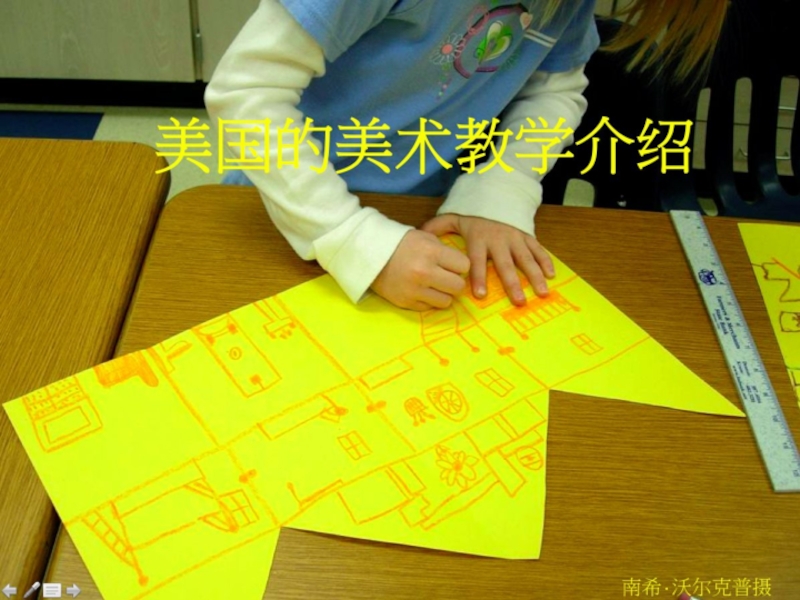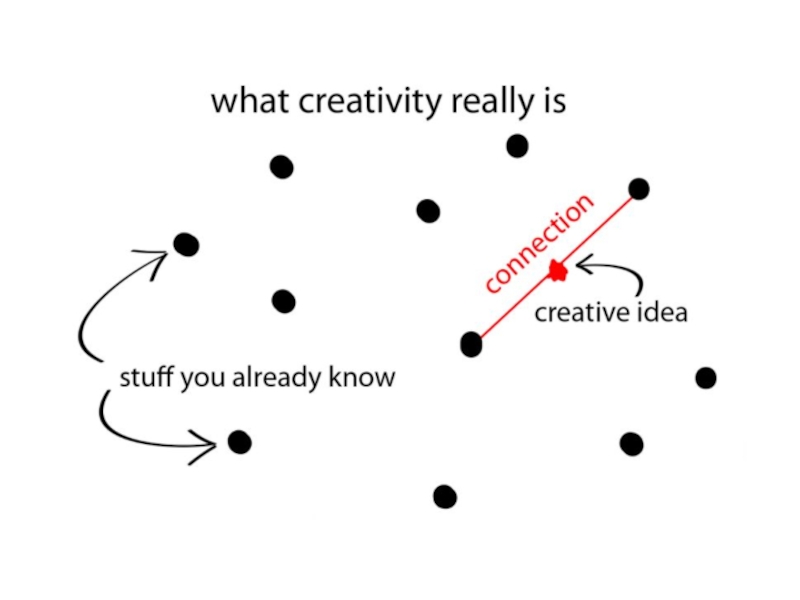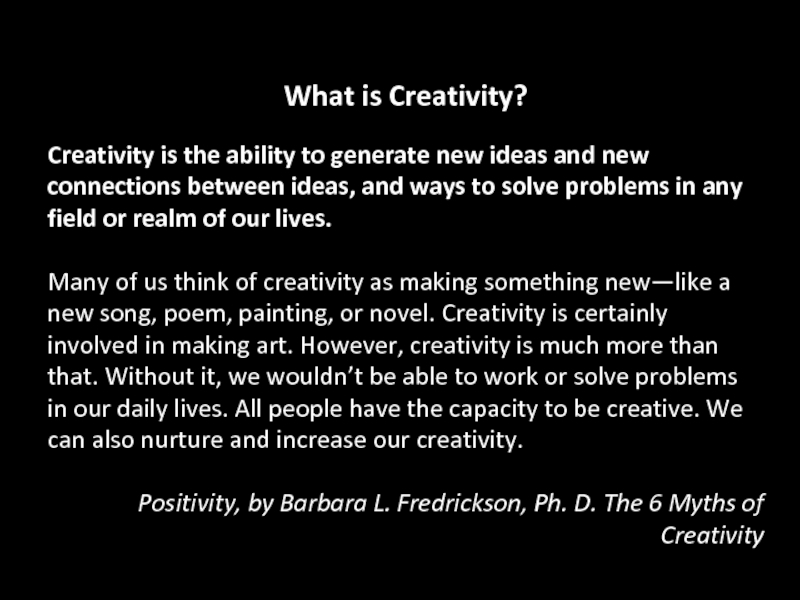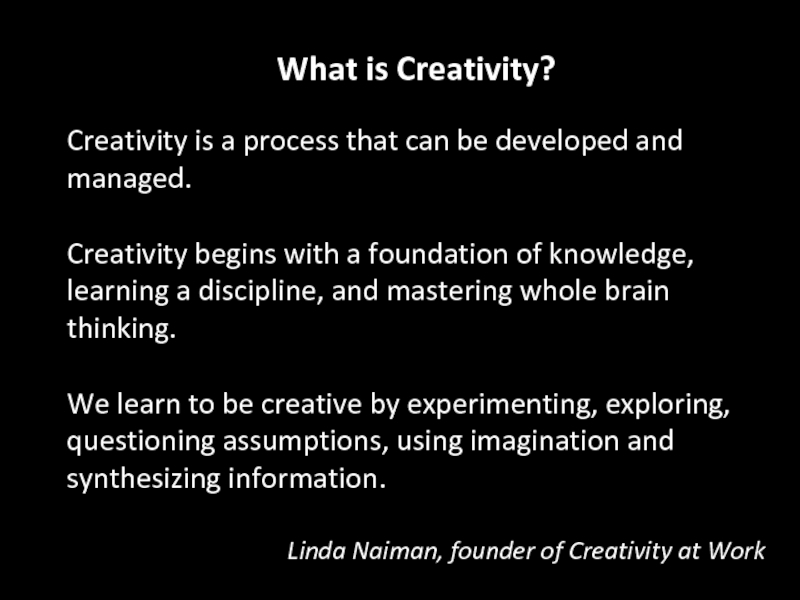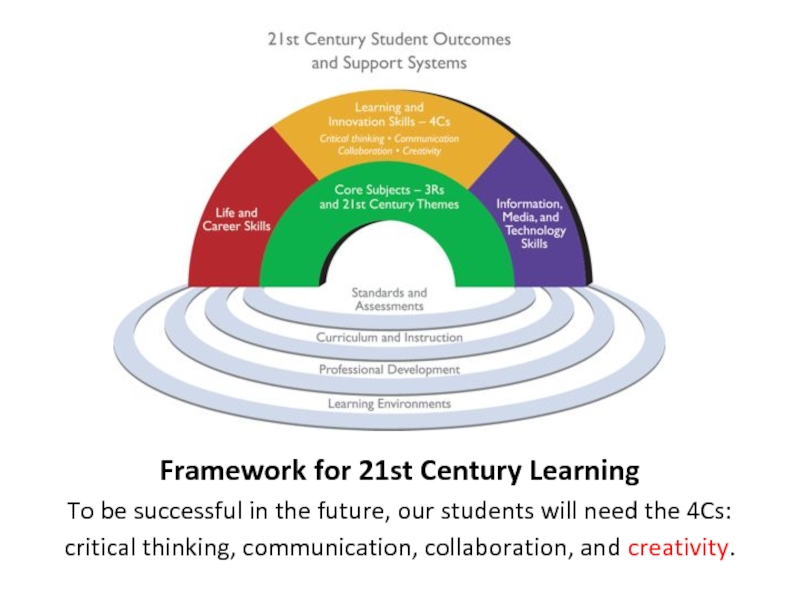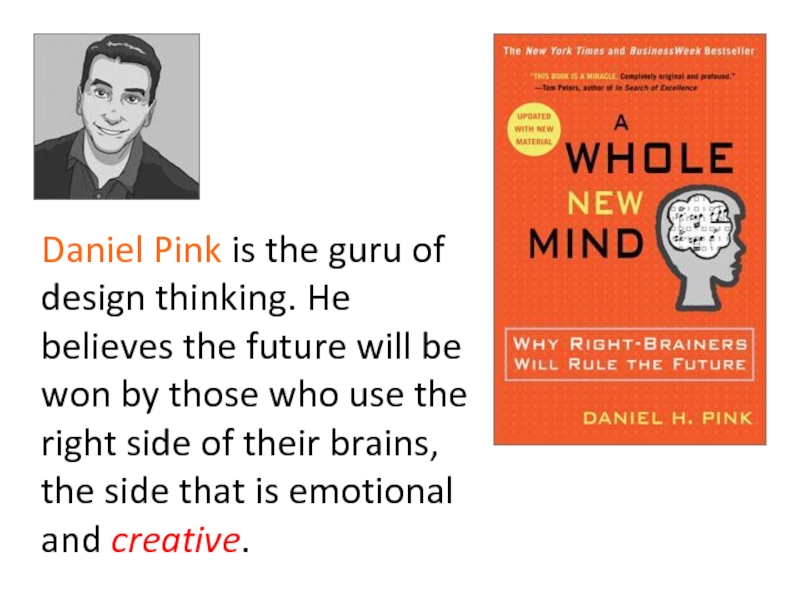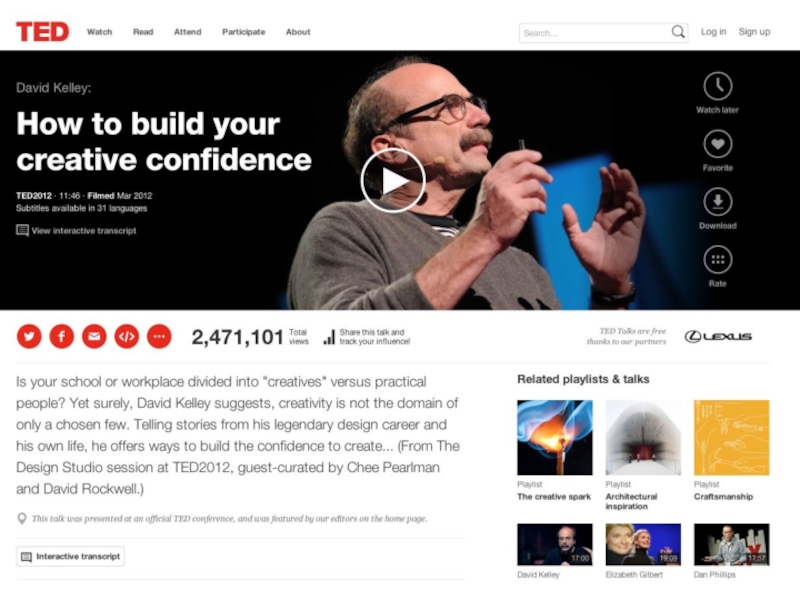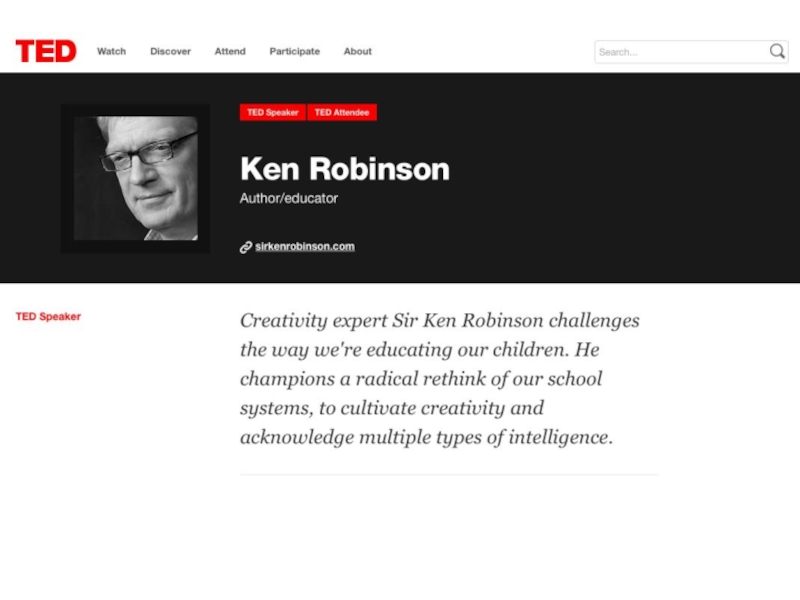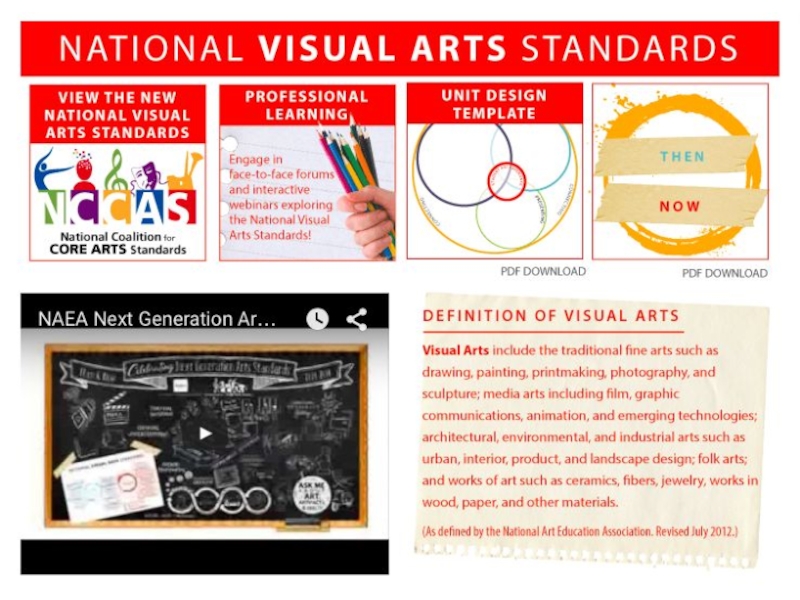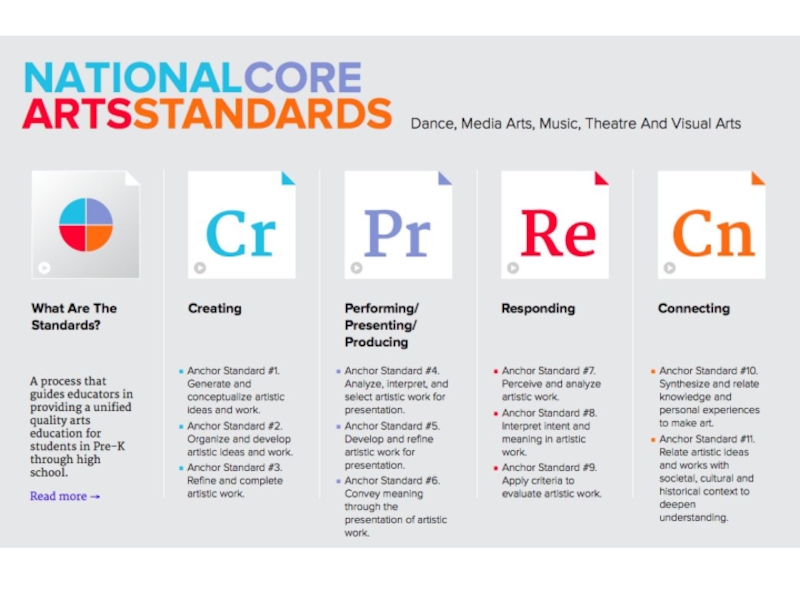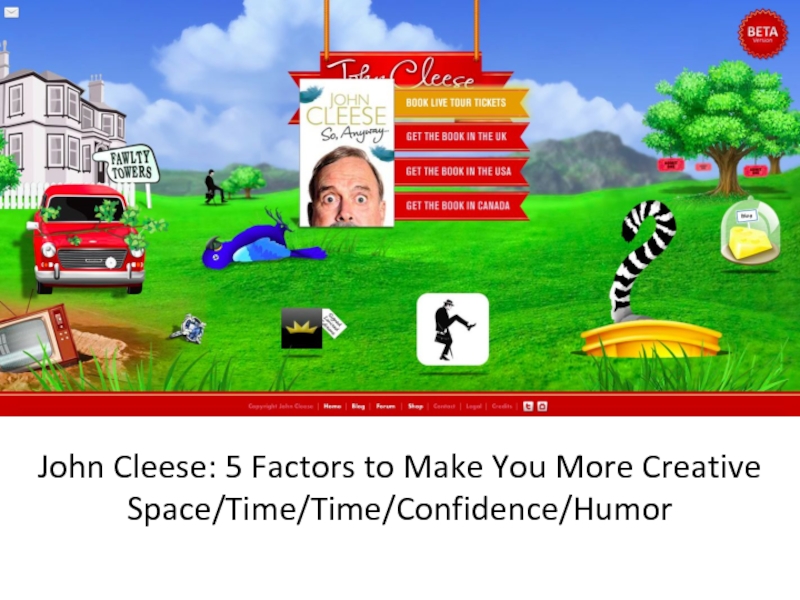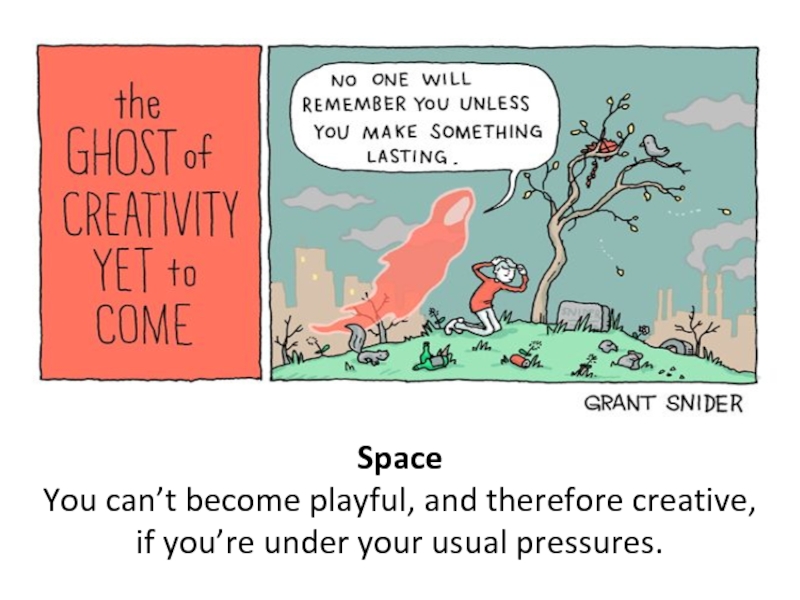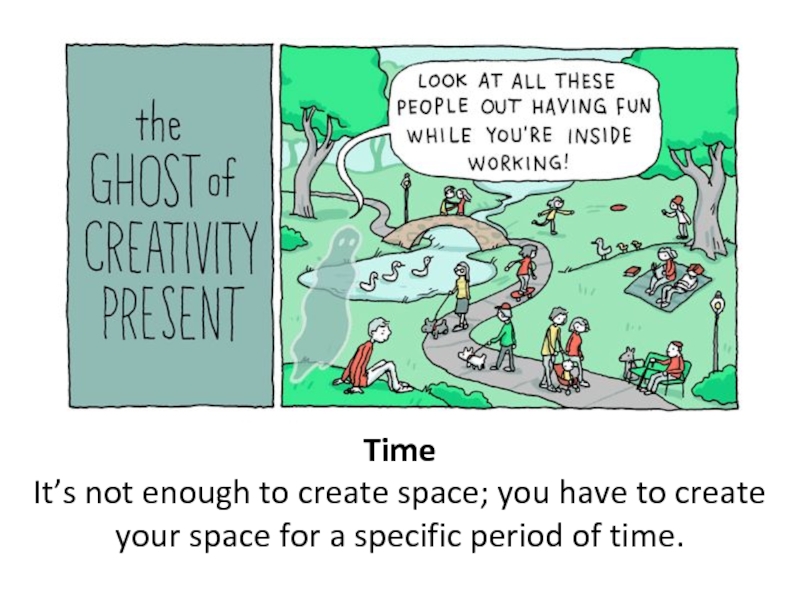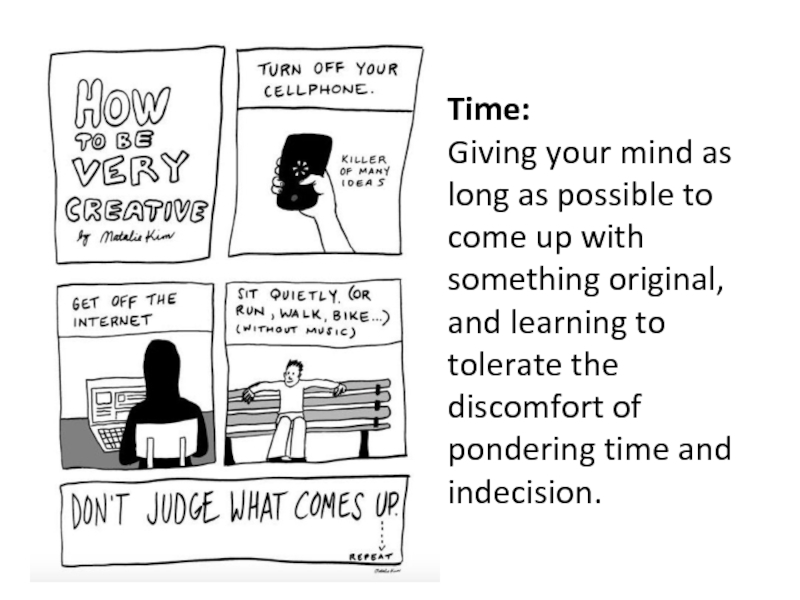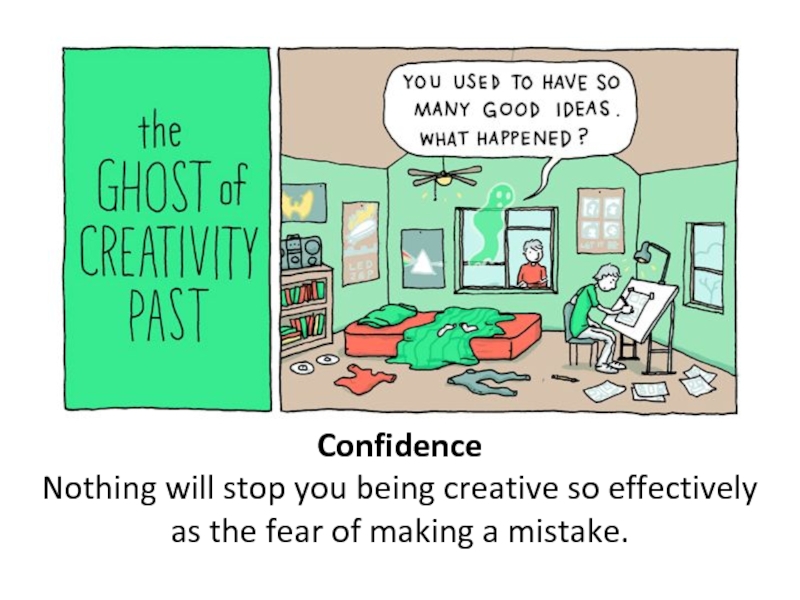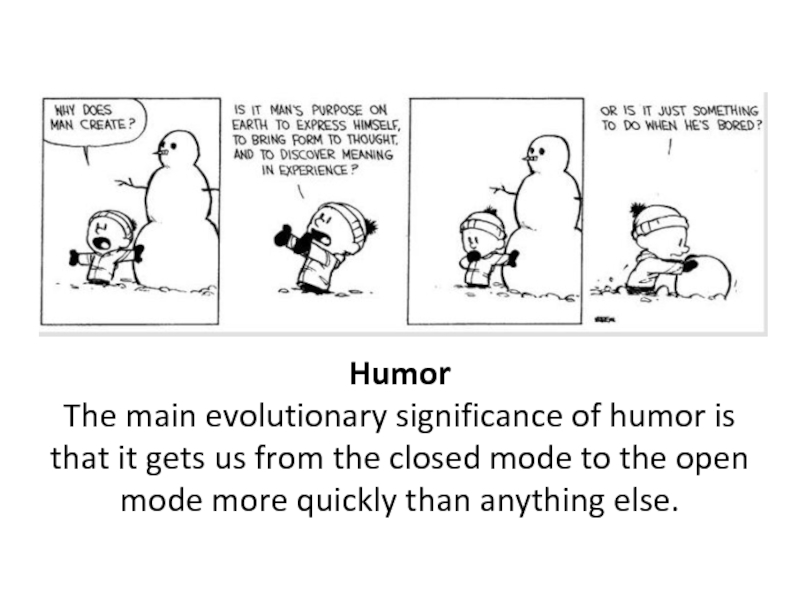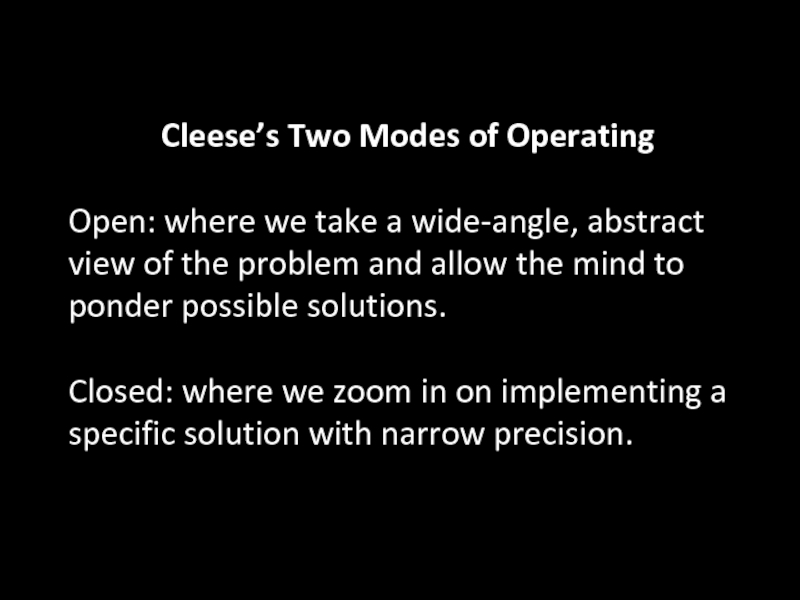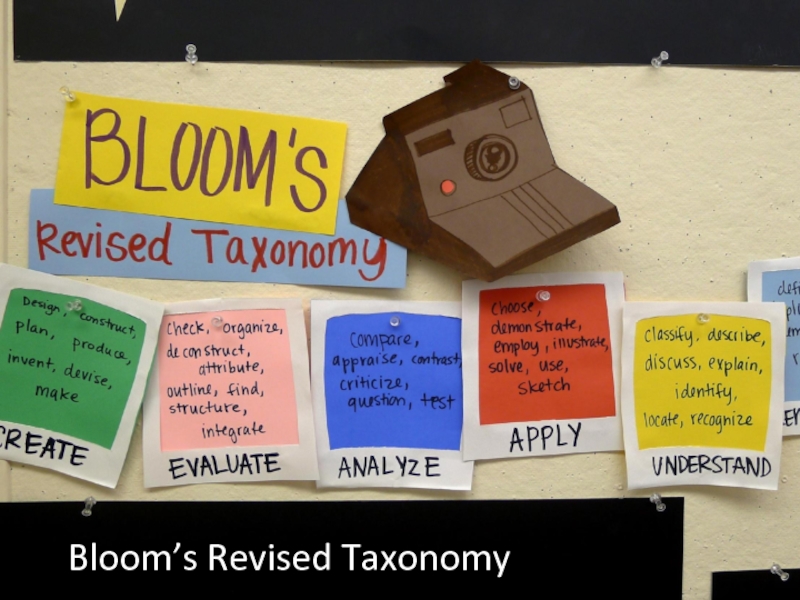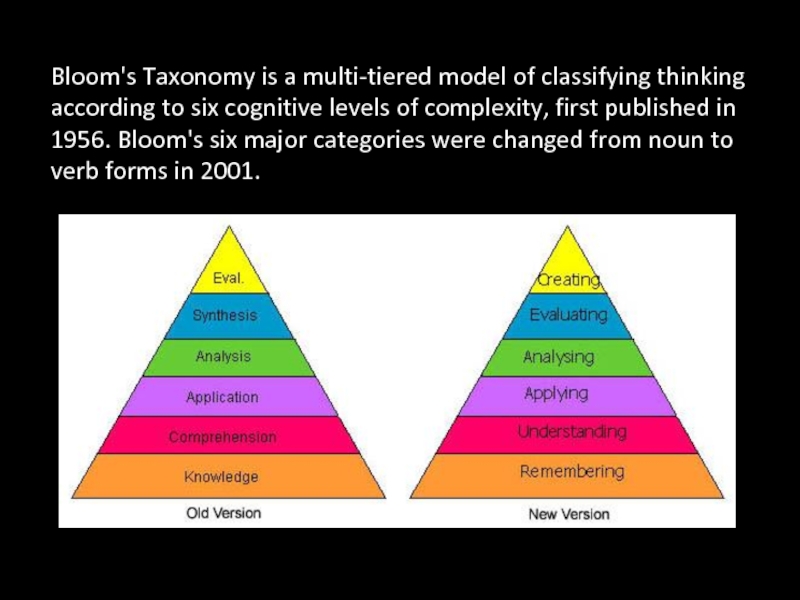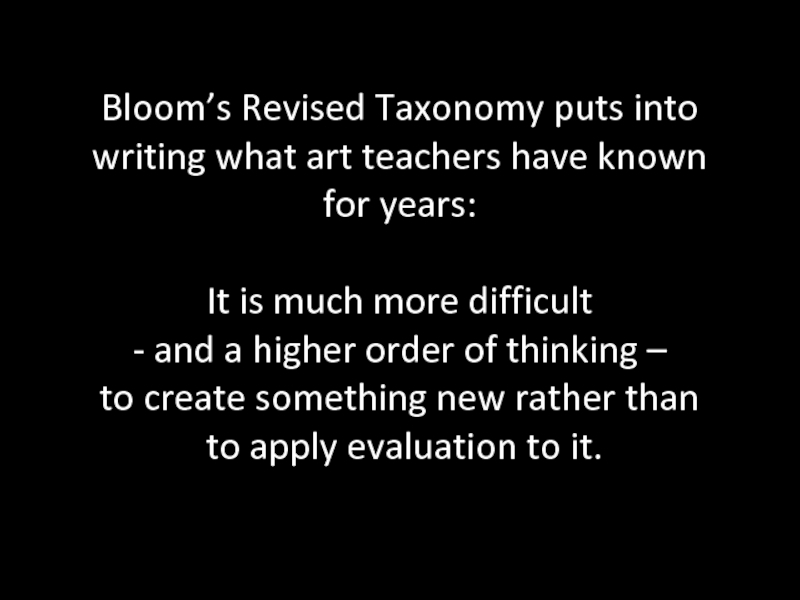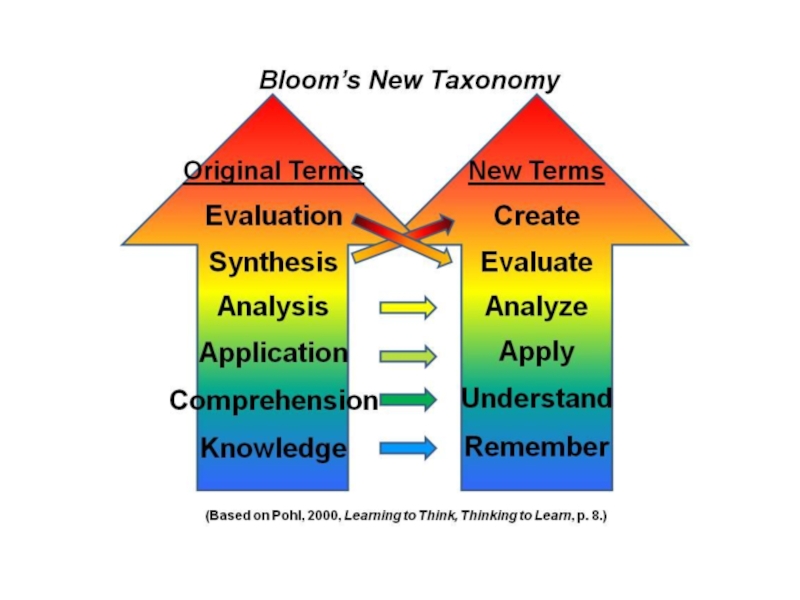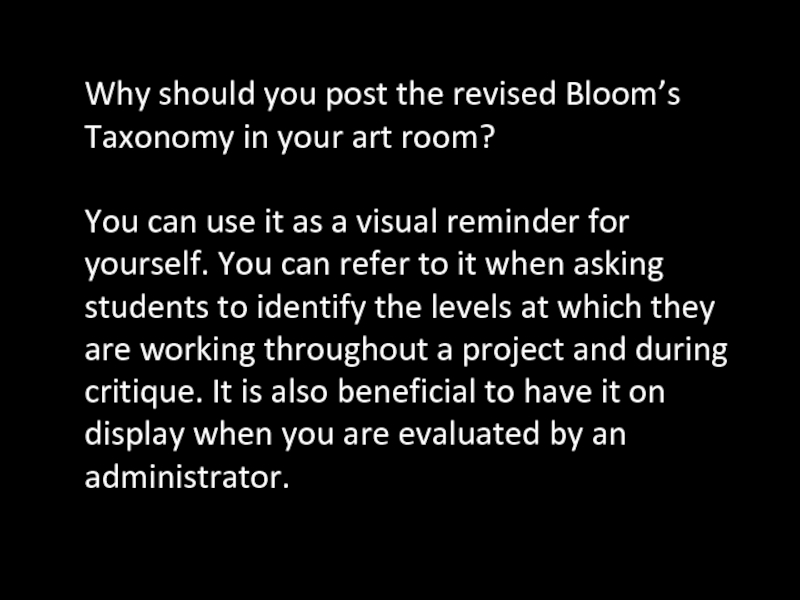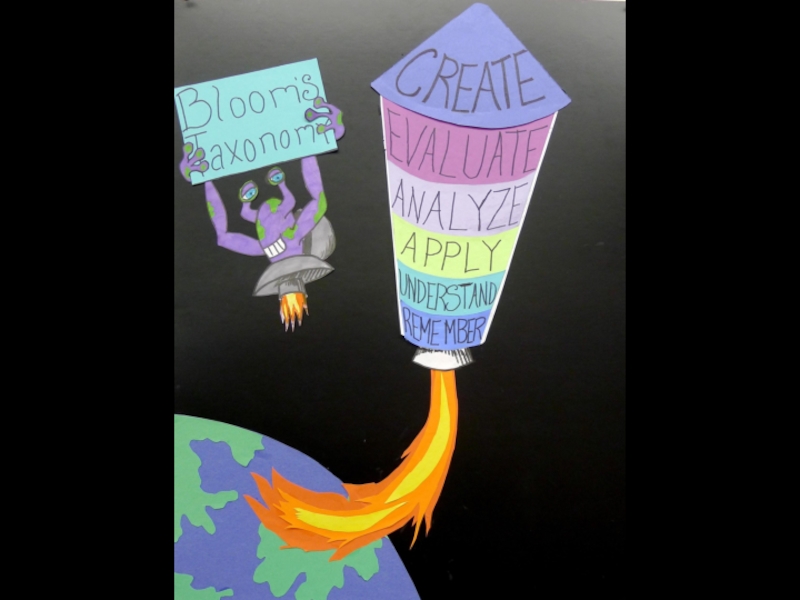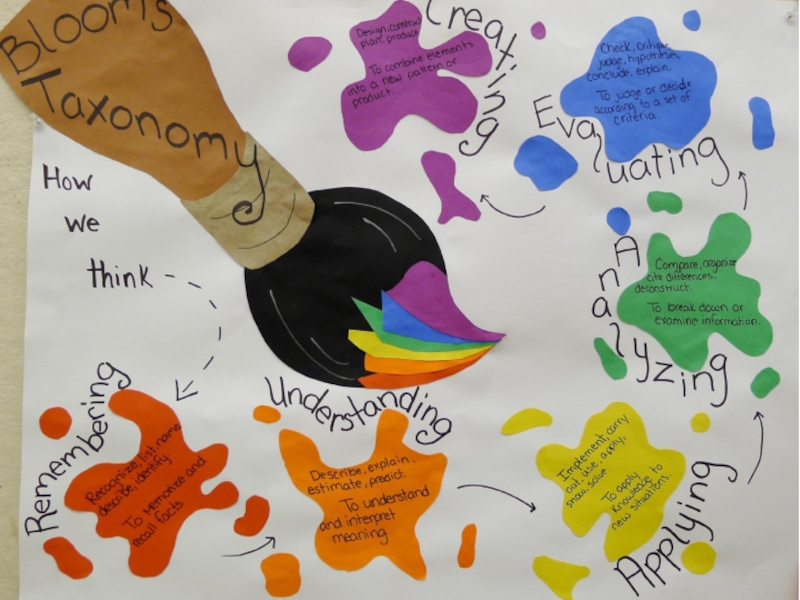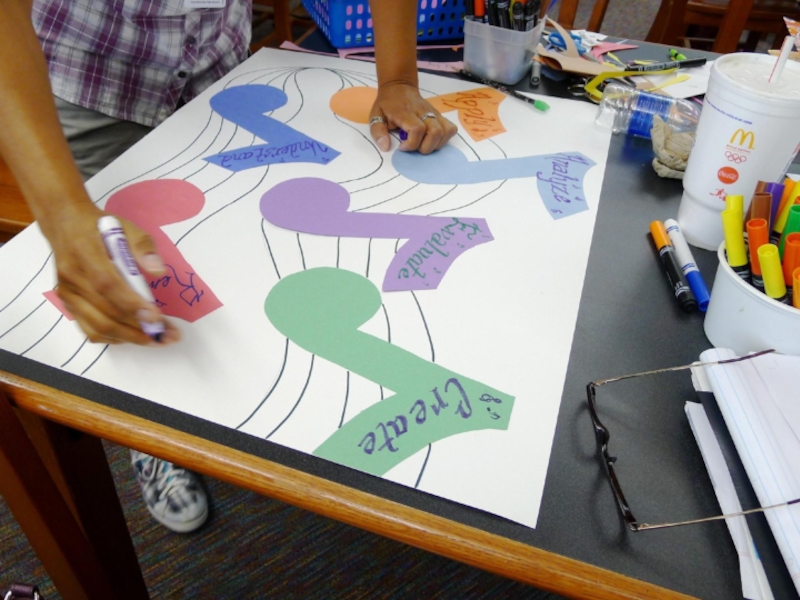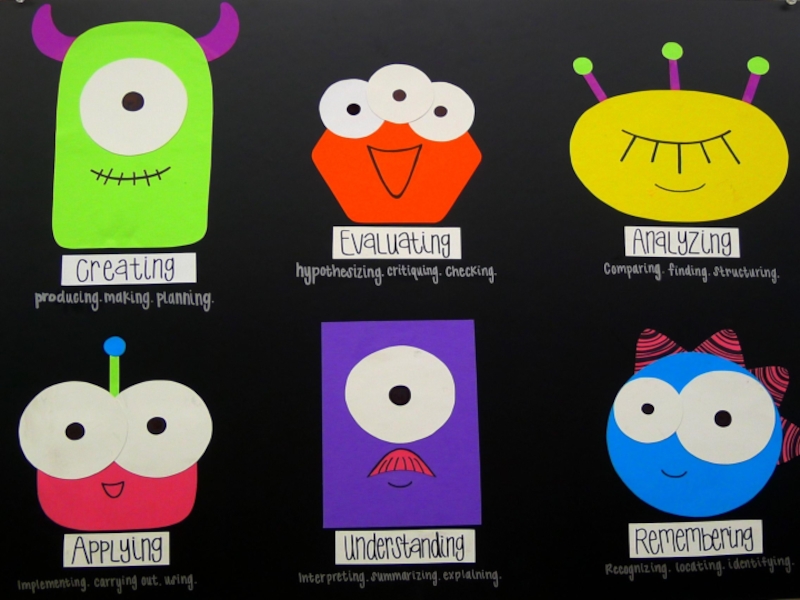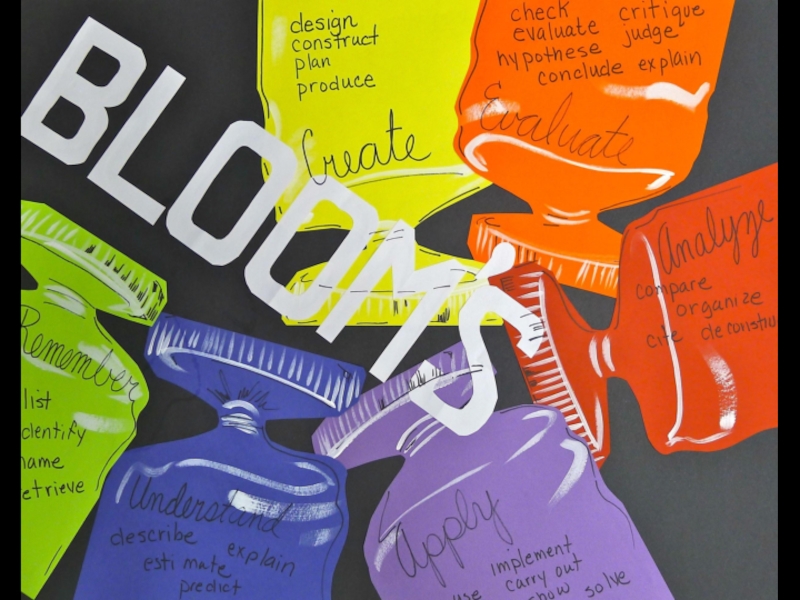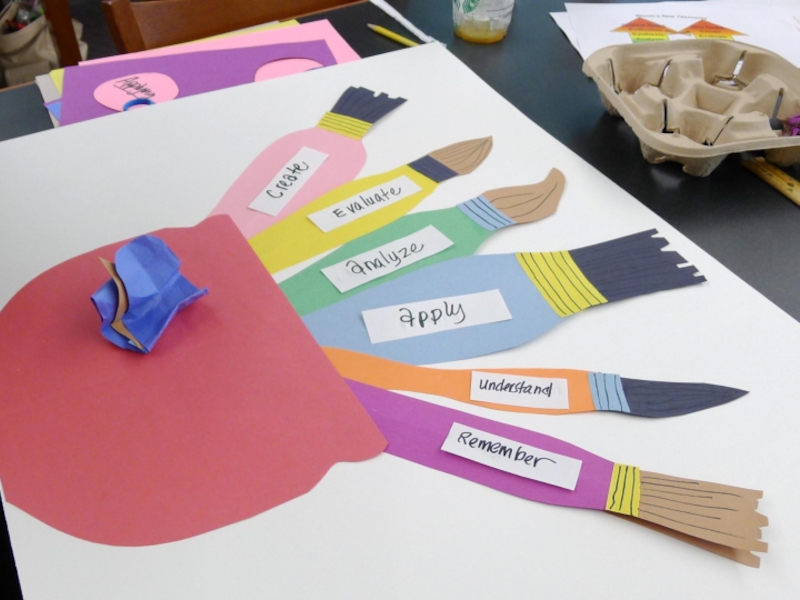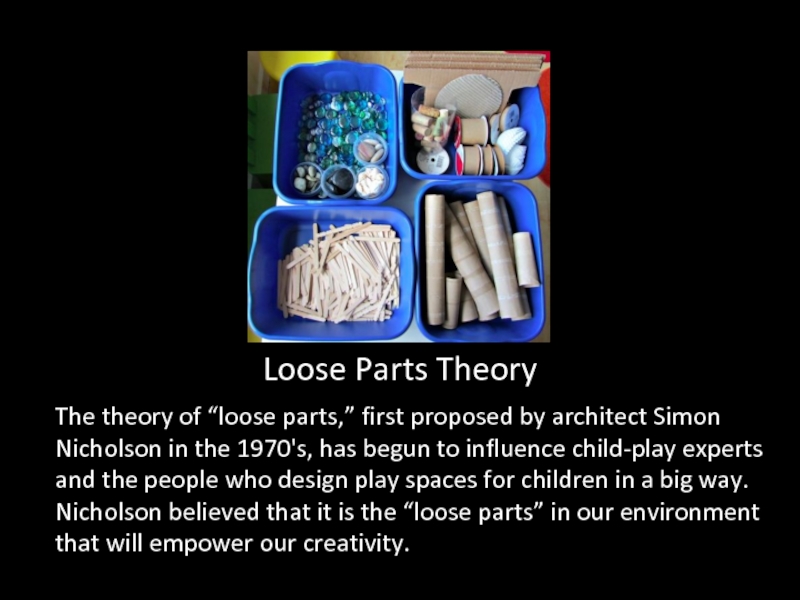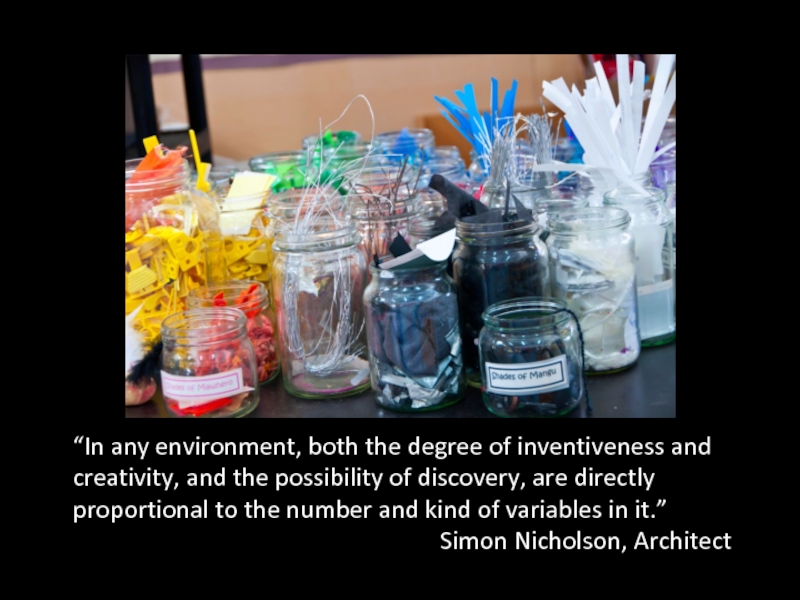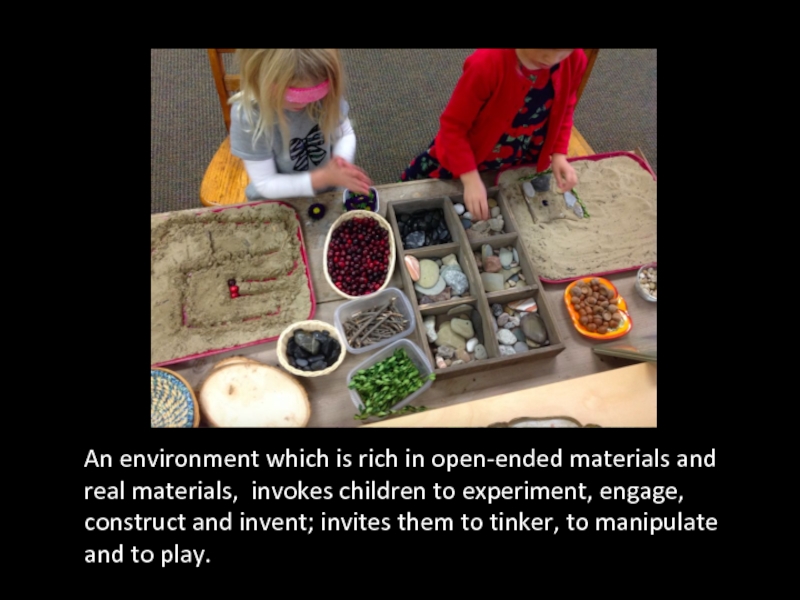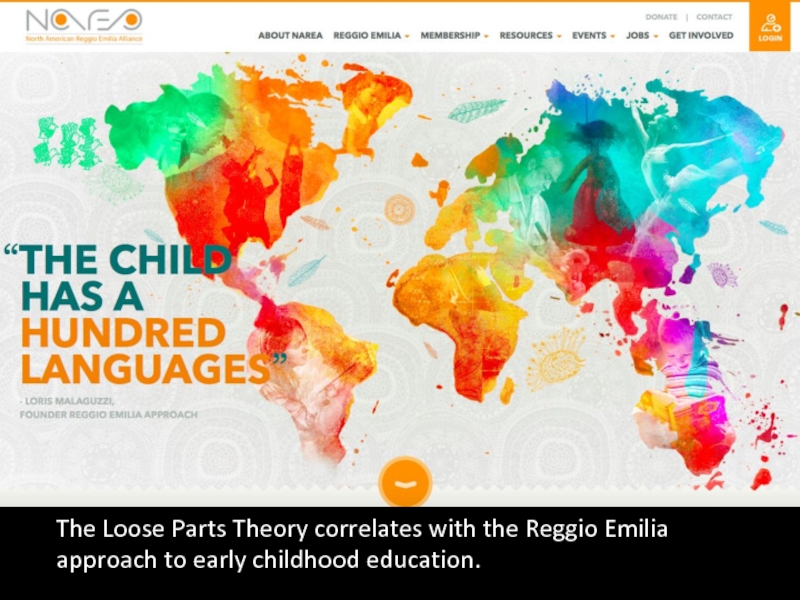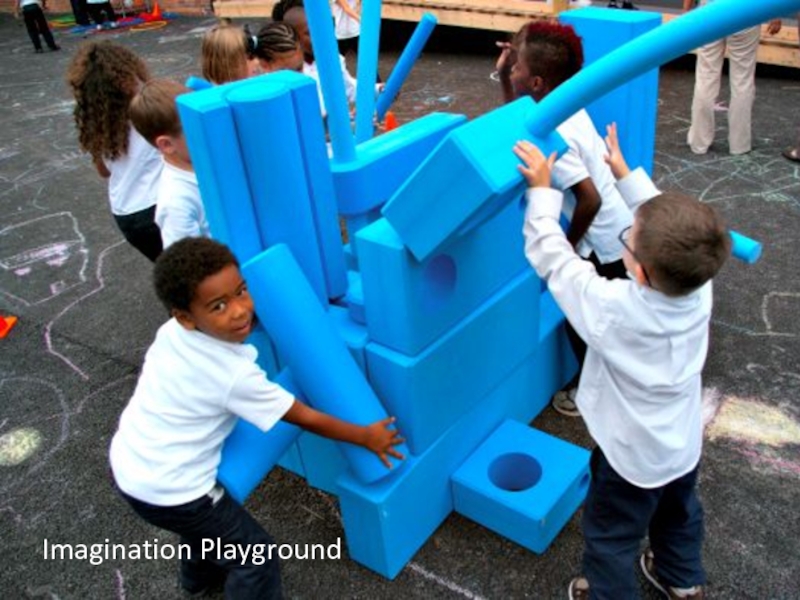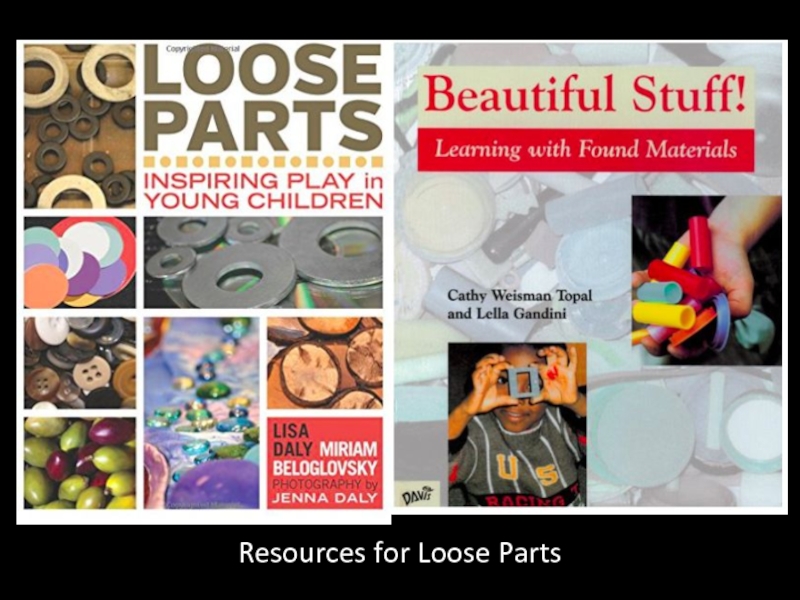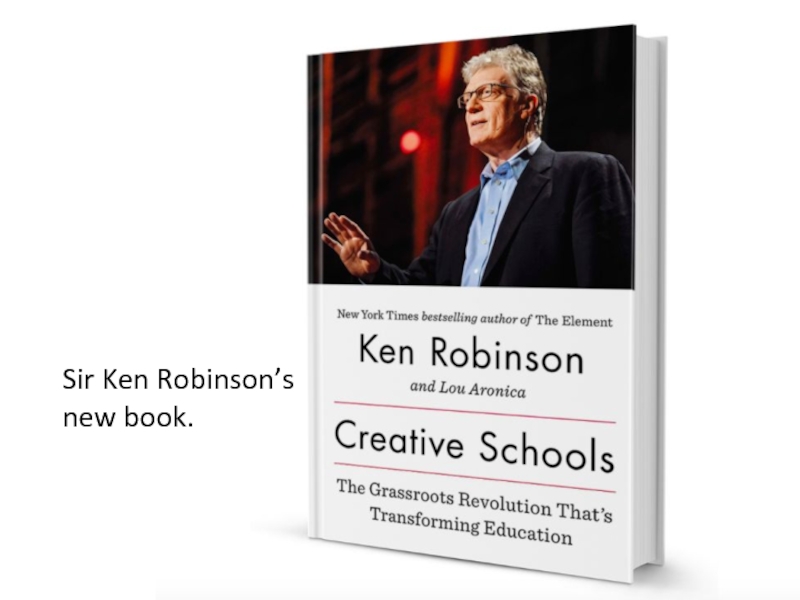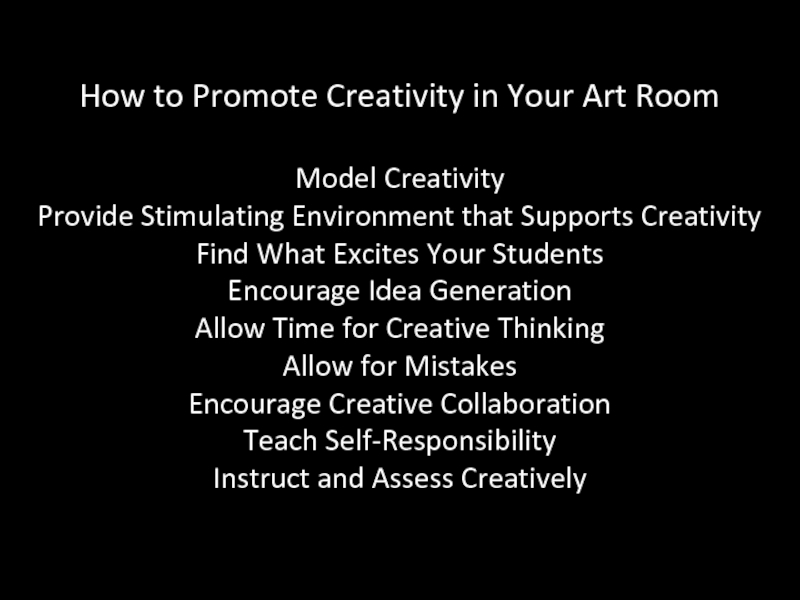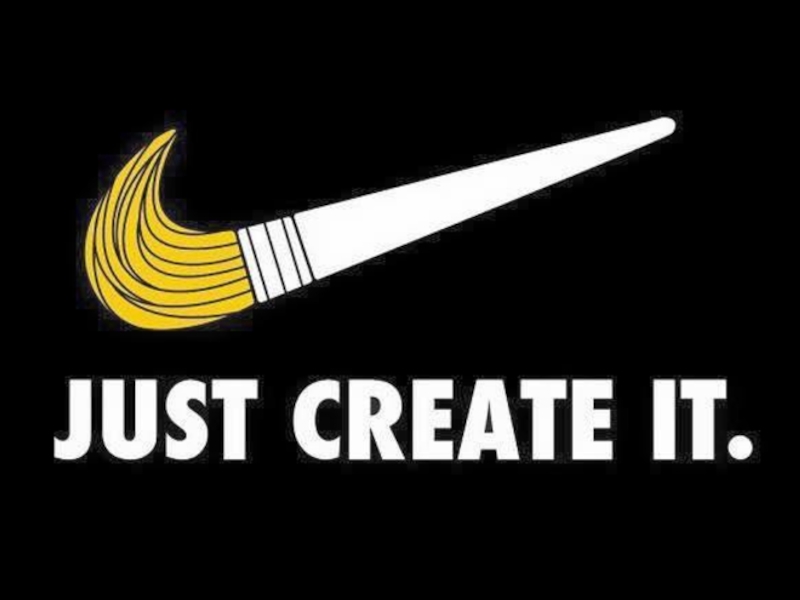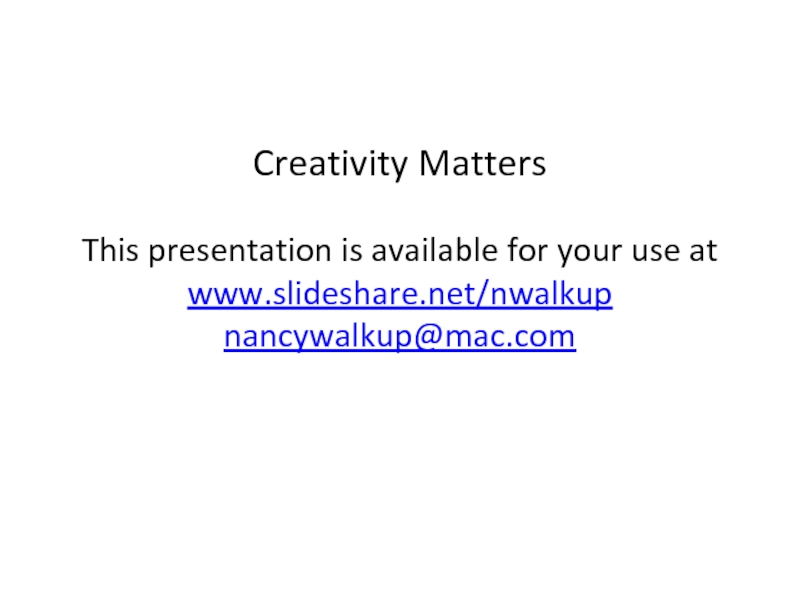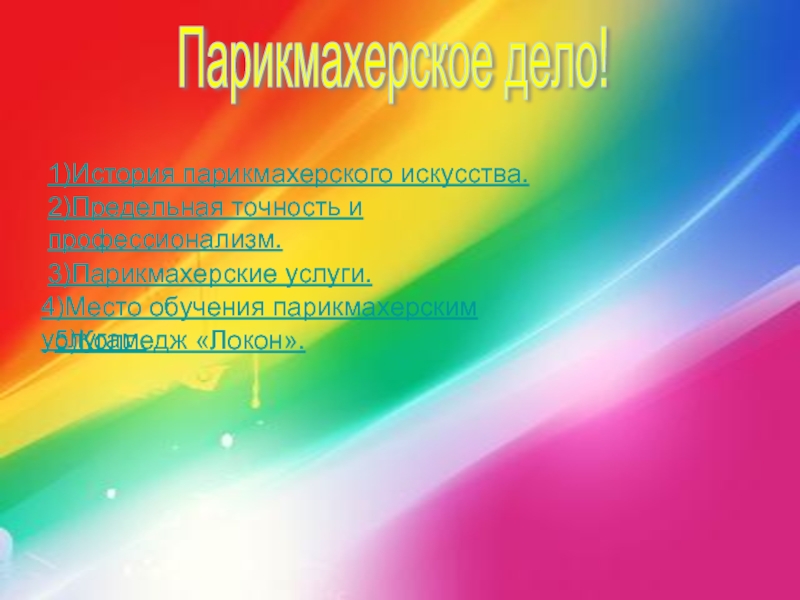- Главная
- Разное
- Дизайн
- Бизнес и предпринимательство
- Аналитика
- Образование
- Развлечения
- Красота и здоровье
- Финансы
- Государство
- Путешествия
- Спорт
- Недвижимость
- Армия
- Графика
- Культурология
- Еда и кулинария
- Лингвистика
- Английский язык
- Астрономия
- Алгебра
- Биология
- География
- Детские презентации
- Информатика
- История
- Литература
- Маркетинг
- Математика
- Медицина
- Менеджмент
- Музыка
- МХК
- Немецкий язык
- ОБЖ
- Обществознание
- Окружающий мир
- Педагогика
- Русский язык
- Технология
- Физика
- Философия
- Химия
- Шаблоны, картинки для презентаций
- Экология
- Экономика
- Юриспруденция
Creativity Matters презентация
Содержание
- 1. Creativity Matters
- 2. https://www.youtube.com/watch?v=fw9BTforFHU
- 3. Creativity Matters
- 7. What is Creativity? Creativity is the
- 8. What is Creativity? Creativity is a
- 9. Framework for 21st Century Learning To be
- 10. Daniel Pink is the guru of
- 15. John Cleese: 5 Factors to Make You More Creative Space/Time/Time/Confidence/Humor
- 16. Space You can’t become playful, and therefore creative, if you’re under your usual pressures.
- 17. Time It’s not enough to create space;
- 18. Time: Giving your mind as long as
- 19. Confidence Nothing will stop you being creative
- 20. Humor The main evolutionary significance of humor
- 21. Cleese’s Two Modes of Operating Open:
- 22. Bloom’s Revised Taxonomy
- 23. Bloom's Taxonomy is a multi-tiered model of
- 24. Bloom’s Revised Taxonomy puts into writing what
- 26. Why should you post the revised Bloom’s
- 34. The theory of “loose parts,” first proposed
- 35. “In any environment, both the degree of inventiveness
- 36. An environment which is rich in open-ended
- 37. The Loose Parts Theory correlates with the Reggio Emilia approach to early childhood education.
- 38. Imagination Playground
- 39. Resources for Loose Parts
- 40. Sir Ken Robinson’s new book.
- 41. How to Promote Creativity in Your Art
- 43. Creativity Matters This presentation is available for your use at www.slideshare.net/nwalkup nancywalkup@mac.com
Слайд 7What is Creativity?
Creativity is the ability to generate new ideas and
new connections between ideas, and ways to solve problems in any field or realm of our lives.
Many of us think of creativity as making something new—like a new song, poem, painting, or novel. Creativity is certainly involved in making art. However, creativity is much more than that. Without it, we wouldn’t be able to work or solve problems in our daily lives. All people have the capacity to be creative. We can also nurture and increase our creativity.
Positivity, by Barbara L. Fredrickson, Ph. D. The 6 Myths of Creativity
Many of us think of creativity as making something new—like a new song, poem, painting, or novel. Creativity is certainly involved in making art. However, creativity is much more than that. Without it, we wouldn’t be able to work or solve problems in our daily lives. All people have the capacity to be creative. We can also nurture and increase our creativity.
Positivity, by Barbara L. Fredrickson, Ph. D. The 6 Myths of Creativity
Слайд 8What is Creativity?
Creativity is a process that can be developed and
managed.
Creativity begins with a foundation of knowledge, learning a discipline, and mastering whole brain thinking.
We learn to be creative by experimenting, exploring, questioning assumptions, using imagination and synthesizing information.
Linda Naiman, founder of Creativity at Work
Creativity begins with a foundation of knowledge, learning a discipline, and mastering whole brain thinking.
We learn to be creative by experimenting, exploring, questioning assumptions, using imagination and synthesizing information.
Linda Naiman, founder of Creativity at Work
Слайд 9Framework for 21st Century Learning
To be successful in the future, our
students will need the 4Cs:
critical thinking, communication, collaboration, and creativity.
critical thinking, communication, collaboration, and creativity.
Слайд 10Daniel Pink is the guru of
design thinking. He believes the
future will be won by those who use the right side of their brains, the side that is emotional and creative.
Слайд 16Space
You can’t become playful, and therefore creative,
if you’re under your
usual pressures.
Слайд 17Time
It’s not enough to create space; you have to create your
space for a specific period of time.
Слайд 18Time:
Giving your mind as long as possible to come up with
something original, and learning to tolerate the discomfort of pondering time and indecision.
Слайд 19Confidence
Nothing will stop you being creative so effectively
as the fear
of making a mistake.
Слайд 20Humor
The main evolutionary significance of humor is
that it gets us
from the closed mode to the open mode more quickly than anything else.
Слайд 21Cleese’s Two Modes of Operating
Open: where we take a wide-angle, abstract
view of the problem and allow the mind to ponder possible solutions.
Closed: where we zoom in on implementing a specific solution with narrow precision.
Closed: where we zoom in on implementing a specific solution with narrow precision.
Слайд 23Bloom's Taxonomy is a multi-tiered model of classifying thinking according to
six cognitive levels of complexity, first published in 1956. Bloom's six major categories were changed from noun to verb forms in 2001.
Слайд 24Bloom’s Revised Taxonomy puts into writing what art teachers have known
for years:
It is much more difficult
- and a higher order of thinking –
to create something new rather than
to apply evaluation to it.
Слайд 26Why should you post the revised Bloom’s
Taxonomy in your art
room?
You can use it as a visual reminder for yourself. You can refer to it when asking students to identify the levels at which they are working throughout a project and during critique. It is also beneficial to have it on display when you are evaluated by an administrator.
You can use it as a visual reminder for yourself. You can refer to it when asking students to identify the levels at which they are working throughout a project and during critique. It is also beneficial to have it on display when you are evaluated by an administrator.
Слайд 34The theory of “loose parts,” first proposed by architect Simon Nicholson
in the 1970's, has begun to influence child-play experts and the people who design play spaces for children in a big way. Nicholson believed that it is the “loose parts” in our environment that will empower our creativity.
Loose Parts Theory
Слайд 35“In any environment, both the degree of inventiveness and
creativity, and the possibility of discovery,
are directly
proportional to the number and kind of variables in it.”
Simon Nicholson, Architect
proportional to the number and kind of variables in it.”
Simon Nicholson, Architect
Слайд 36An environment which is rich in open-ended materials and real materials,
invokes children to experiment, engage, construct and invent; invites them to tinker, to manipulate and to play.
Слайд 37The Loose Parts Theory correlates with the Reggio Emilia approach to
early childhood education.
Слайд 41How to Promote Creativity in Your Art Room
Model Creativity
Provide Stimulating Environment
that Supports Creativity
Find What Excites Your Students
Encourage Idea Generation
Allow Time for Creative Thinking
Allow for Mistakes
Encourage Creative Collaboration
Teach Self-Responsibility
Instruct and Assess Creatively
Find What Excites Your Students
Encourage Idea Generation
Allow Time for Creative Thinking
Allow for Mistakes
Encourage Creative Collaboration
Teach Self-Responsibility
Instruct and Assess Creatively
